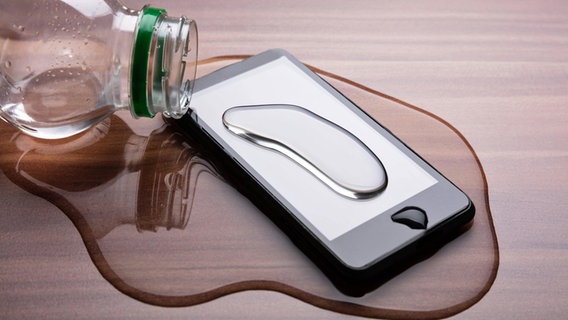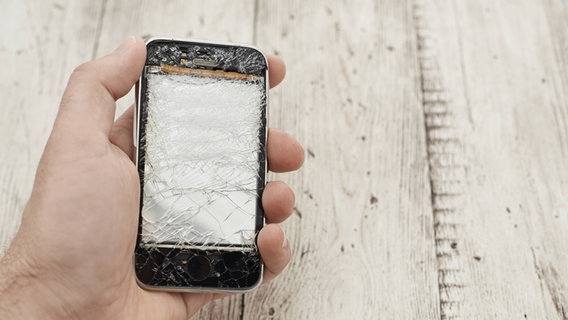Status: 03/16/2023 11:08 am
A weak battery often prompts mobile phone owners to buy new ones. Proper charging saves battery life. Modern lithium-ion batteries should neither be completely discharged nor fully charged.
In order to use mobile phone batteries for as long as possible, the recommendation used to be to let them run completely empty and then fully charge them again in an uninterrupted charging process. On the other hand, if mobile phone owners repeatedly connected their devices to the power grid without emptying them, the so-called memory effect became apparent with the nickel-cadmium batteries that were mainly installed at the time: the batteries seemed to “remember” the lower energy requirement, and their capacity dwindled. As a result, mobile phones had to be charged more frequently, and batteries sometimes became unusable.
Lithium-ion batteries: charge level between 20 and 80 percent
Today, lithium-ion batteries are installed in most smartphones. The memory effect is no longer detectable with these batteries. In contrast to nickel-cadmium batteries, lithium-ion batteries should neither be completely discharged nor fully charged. Tristan Jorde, head of the Environment and Product Safety department at the Hamburg Consumer Advice Center, recommends keeping the charge level of lithium-ion batteries in the range between 20 and 80 percent. With modern devices, the power supply is automatically throttled from around 80 percent upwards in order to minimize the risk of the battery overheating. A constant power supply in the range between 20 and 80 percent, on the other hand, maintains the performance of lithium-ion batteries.
Not every mobile phone is suitable for fast charging
Jorde warns against the use of fast charging cables, also known as super chargers. These are designed to fully charge smartphones within a very short time. But not every battery is designed to absorb correspondingly high currents. Consumers should therefore check whether their own mobile phone is suitable for the quick charge function. Jorde also recommends being present during fast charging in case the battery overheats or even catches fire.
Pay attention to the quality of charging cables
For a long battery life, the consumer advocate also recommends using original charging cables whenever possible. Because these are matched to the respective mobile phone in terms of their performance and current. The use of cheap or uncertified charging cables can damage the battery because, for example, inferior materials have been used or cables do not fit perfectly into the cell phone’s charging port. According to Jorde, a high price for charging cables is no guarantee of good quality. If a new charging cable is needed, mobile phone owners should get the original charging cable if possible or seek advice from a specialist retailer.
Charge your phone overnight?
Older mobile phones with nickel-cadmium batteries should always be disconnected from the mains when they are fully charged. Due to a minimal battery consumption when not in use at night, “mini-charging” occurs again and again for hours, which impairs the capacity of the battery. In addition, nickel-cadmium batteries can overheat as a result.
Charging mobile phones with modern lithium-ion batteries overnight is usually not a problem with regard to the performance of the battery. The manufacturers are also giving the all-clear with regard to safety: modern batteries are equipped with protective mechanisms to prevent overheating.
But consumer advocate Jorde warns against charging at night: “With the large number of devices on the market, batteries can be damaged in individual cases – for example during production,” says Jorde. Overheating of individual batteries as a result of such damage cannot be ruled out. The batteries can also be damaged by use. If a battery accidentally falls on a hard floor, for example, it can be permanently damaged, warns the “Action The Safe House eV”.
Tips: Charge smartphones safely
Lithium-ion batteries store a comparatively large amount of energy. As a result, when charging cell phones, they can overheat, balloon, ignite and, in rare cases, even explode.
In order to charge smartphones safely, consumers should therefore use their cell phones
- Charge during the day while being present and awake
- place on a non-flammable surface when charging and remove anything around (e.g. free window sill)
- do not put under the pillow or duvet in bed when charging (heat can accumulate)
- do not expose to heat or cold (e.g. do not leave in the car in summer)
Drain the battery: Tips for saving energy
Modern mobile phones often have functions for optimized battery charging. For example, the charging speed and time are adjusted to factors such as usage habits, the age of the battery or the temperature. This function is called “Optimized Battery Charging” in Apple devices and “Adaptive Fast Charging” in Samsung Galaxy models.
In addition, consumers can do the following to make a full battery last longer:
- remove unused apps
- Close apps after use (often running in the background)
- Darken the screen (if necessary, set automatic dimming)
- Turn on power saving mode
- Disable GPS location in settings
- Turn off WiFi when you’re on the go (otherwise your phone will constantly search for networks)
- Switch off short-range communication NFC when not in use (often used for payment, e.g. with Apple Pay)
- Use a ringtone instead of a vibrating alarm
- Turn off your phone when not in use or put it on airplane mode
When a battery should be changed depends on how the cell phone is used. If a battery gets so hot that it can no longer be touched, a defect is likely and it is advisable to replace the battery. The Ecodesign Directive should make it easier for consumers to swap batteries in the future.
Further information
Keywords for this article
Technology




